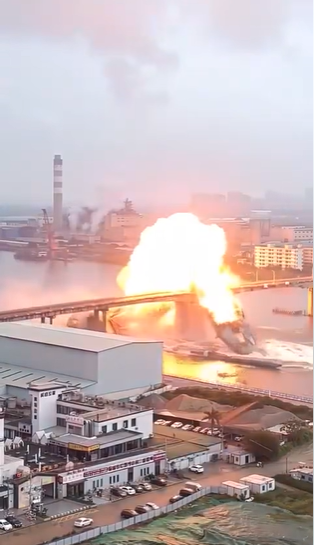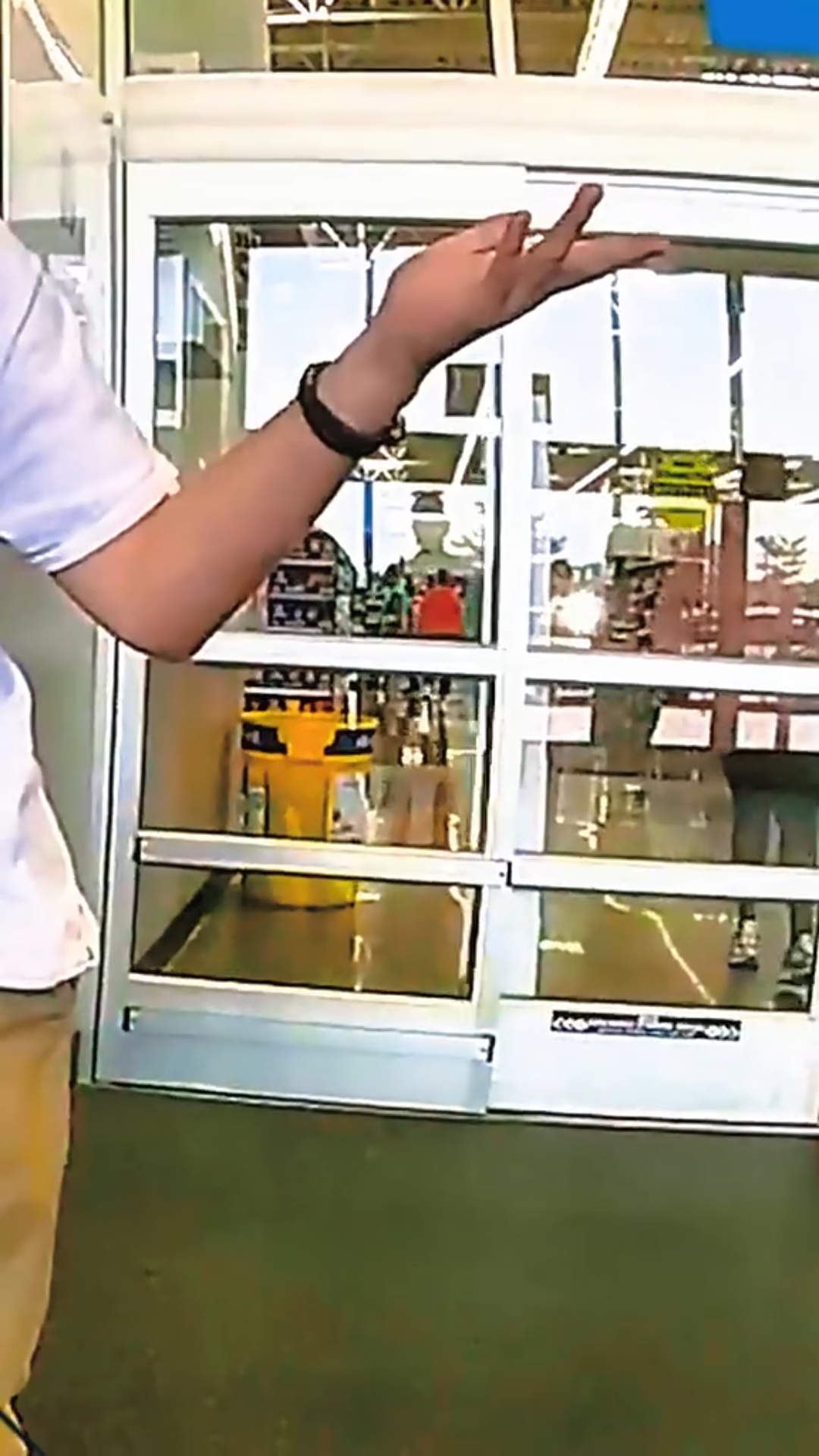Seconds from Collapse: How a Viral TikTok Sparked a Global Conversation
It all started with a short video upload—one that initially blended into the endless scroll of social media content. Within hours, however, it had captured the attention of millions worldwide. The clip, though only a few seconds long, carried an air of mystery and tension. A fuel tanker appeared motionless beneath a visibly weakened bridge, its structure showing cracks and signs of stress that left viewers unsettled.
Was this clip documenting a genuine event? Could it have been a rehearsal, a simulation, or perhaps a staged awareness campaign? With no clear explanation provided, the footage left space for interpretation—and in that ambiguity lay its power to spread.
Anatomy of a Viral Clip
The short video created instant suspense. Viewers were shown a fuel truck stopped directly under a bridge with visible fractures along its beams and slabs. The appearance of strain suggested the possibility of failure, even though the video gave no indication of what happened next. Did the vehicle move away safely? Was the bridge undergoing repair? Or was it a creative project designed to make people think?
By leaving those questions unanswered, the clip transformed from simple footage into a shared puzzle. People worldwide projected their own experiences, concerns, and fears onto it—making it more engaging than if the context had been clear.
Social Media Reactions
In just a few days, the video was reposted countless times across TikTok, Instagram, and other platforms. Online communities even gave it a nickname: “Seconds from Collapse.” Some believed it was a real near-miss, while others suspected it was digitally altered or staged for awareness. The lack of certainty only increased its popularity, as people debated its origin and authenticity.
The comments reflected not just fascination but also concern. Many viewers related it to their own daily routines—commuting across bridges, waiting in traffic under overpasses, or traveling on highways where heavy vehicles pass regularly. The clip struck a nerve precisely because it reminded people of the hidden reliance we all place on everyday infrastructure.
Why It Resonated
At its core, the video touched on a universal theme: safety in the systems we depend on. Bridges, tunnels, and roads symbolize reliability, yet when shown as fragile, they challenge our sense of security.
This moment of recognition turned the clip into more than entertainment—it became a conversation starter. People reflected on the importance of maintenance, public safety, and the unseen work of engineers and inspectors who keep these structures sound.
Echoes of Real Events
Though the video’s origin remains uncertain, its imagery reminded many viewers of real incidents from around the world:
- Taiwan (2019): The Nanfang’ao Bridge collapsed unexpectedly, drawing global attention.
- India (2025): The Gambhira Bridge in Gujarat failed during morning traffic, highlighting the risks of aging infrastructure.
- Brazil (2024): A highway bridge gave way as a tanker attempted to cross, underscoring the importance of design standards and safety checks.
These real examples provided context for why so many people took the viral video seriously, regardless of whether it was staged or authentic.
A Larger Issue: Infrastructure
The video also reignited a broader discussion about infrastructure worldwide. Reports by engineering associations consistently show that many bridges, highways, and tunnels are overdue for inspection, repair, or replacement. Population growth and increased traffic only add more stress to systems originally designed for lighter use.
By compressing this issue into a visual moment, the clip made an abstract problem visible. What reports and statistics sometimes struggle to communicate, a few seconds of footage achieved almost instantly.
The Power and Limits of Social Media
The format of the clip—a short, looping video—was key to its success. Platforms like TikTok thrive on fast, shareable moments that spark emotion. But with that speed comes a challenge: audiences are often left guessing whether content reflects fact, fiction, or something in between.
Regardless of the answer, one truth is clear: social media can amplify public awareness in ways traditional channels may not. This video may have reached more people with its implicit message about safety than many official campaigns.
Human Psychology and Viral Fear
Psychologists note that such clips resonate because they allow people to engage with fear indirectly. Watching a tense moment on screen creates adrenaline without real risk. The uncertainty about authenticity deepens the intrigue, keeping audiences engaged in ongoing debate.
Beyond the Video: Stories of Preparedness
While the viral moment focused on danger, it also reminded people of the role of those who respond when real infrastructure problems arise. From engineers reinforcing weakened structures to emergency workers ensuring public safety, these efforts demonstrate resilience and preparedness in the face of potential hazards.
Lessons to Carry Forward
Even without knowing whether the clip was authentic or staged, the discussion it sparked highlights key lessons:
- Maintenance matters: Regular investment in infrastructure prevents small weaknesses from becoming major risks.
- Transparency builds trust: Clear communication from authorities reduces speculation and misinformation.
- Preparedness saves lives: Training, drills, and quick response capacity are crucial for minimizing harm.
- Media influences perception: A short video can inspire more debate and reflection than a lengthy report.
Closing Reflection
The “Seconds from Collapse” video was more than just another fleeting online trend. It became a global metaphor for fragility, awareness, and the systems we often take for granted. Whether staged or authentic, its power lay in sparking dialogue about safety and responsibility.
In a world where even the strongest structures can weaken over time, the message is clear: vigilance, care, and preparedness are not optional—they are essential.



